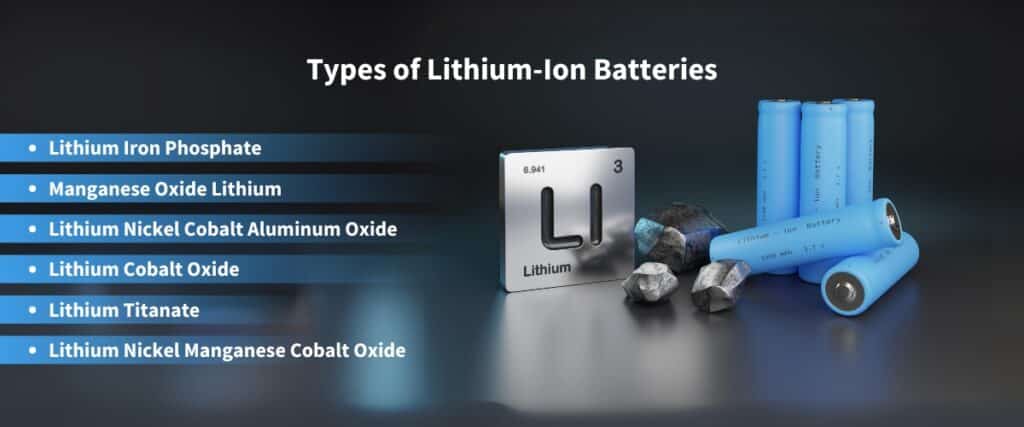Lithium Ion batteries have revolutionized technology and are now found practically everywhere, from inverter batteries to electric vehicles. Lithium-ion batteries are becoming increasingly popular due to their numerous benefits. If you are considering purchasing an inverter but are unsure about which sort of inverter battery to purchase, we can assist you. If you plan to acquire lithium-ion batteries, first learn how the battery works, the many types of lithium-ion batteries, and why lithium is utilized in batteries.
How does Lithium-ion Battery work?
A lithium-ion battery is made up of several components, including a cathode, anode, electrolyte, separator, and positive and negative current collectors. The anode and cathode in a battery store the lithium, while the electrolyte transports the positive lithium ion from the cathode to the anode via the separator. When the lithium-ion begins to move, electrons are produced in the anode, resulting in a charge at positive current collection. The electric current then passes from the collector to the negative current collector via the powering device.


Different types of battery types:
1. Lithium Iron Phosphate
Also known as LFP, has phosphate as a cathode and a graphitic carbon electrode in place of an anode. As a result, they are more thermally stable. Furthermore, unlike regular batteries, they have a long life cycle and a minimal depth of discharge impact.
2. Manganese Oxide Lithium
This type of lithium ion battery is commonly seen in medical gadgets, power tools, and electric bikes. The battery has low internal cell resistance, allowing for high-current discharge and rapid charging. Furthermore, when compared to other motorcycles, the lithium manganese oxide battery can work safely at higher temperatures.
3. Lithium Nickel Cobalt Aluminium Oxide
This lithium ion battery type is well-known for its lengthy life cycle and ability to supply a greater current for extended periods of time. Furthermore, the battery type may function admirably in high-load situations.
4. Lithium Cobalt Oxide
Heavy-load applications are not well served by these batteries. They do, however, provide power for a longer period of time. These are widely found in portable gadgets including mobile phones, laptop computers, and cameras. Unfortunately, this sort of battery has a shorter life duration and is very expensive.
5. Lithium Nickel Manganese Cobalt Oxide
The battery type benefits from cobalt, manganese, and nickel and creates a consistent energy flow. This permits them to function for a longer period of time. These are primarily used in scooters, e-bikes, and other electric vehicles.
6. Lithium Titanate
They are highly safe, charge faster, and last longer. The lithium titanate battery type is well renowned for its safety and is commonly used in military equipment, solar-powered streetlights, and telecommunication devices.
Why Lithium is used in batteries?
- Lithium ion battery types utilised in inverters are dependable and stable, and they are widely employed in inverter batteries. There are various advantages to using lithium ion battery-powered inverters. Some have arrived.
- Inverters powered by lithium ion batteries have a better energy density than other battery types.
- Inverters powered by lithium ion batteries have a longer lifespan. Indeed, some of them have over 3000 discharge and charge cycles.
- They require less maintenance than ordinary batteries.
- The battery can be charged more quickly and has an excellent memory effect.
- The main advantage is that the lithium ion battery powered inverters are portable. This is due to their modest weight and portability.
- The battery has a low self-discharge rate as well.


